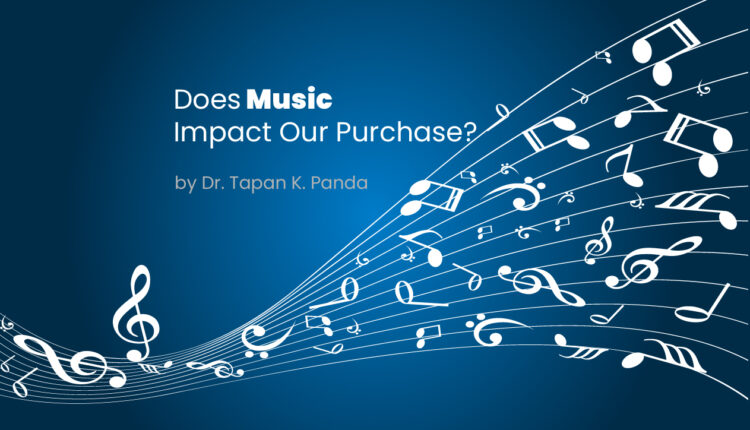Does Music Impact Our Purchase?
Music is a secondary use in marketing communication (unless it’s a pure play musical). What matters most is the visual and thematic storyline in any advertising communication. However, whenever we remember musical advertising, our attention goes to a few popular ones like the Titan Campaign (https://www.youtube.com/watch?v=SvRx1C0oxOQ) or a popular campaign like ‘Nayee Bharat ki Buland Tasveer’ of Bajaj or ‘Desh ki Dhadkan‘ of erstwhile Hero Honda. In that case, does music in advertising influence our purchase decision? At least building some level of buying intention for a brand! Mood and emotional elements are the focus of the advertising world in a country like India- the common adage is- that if nothing works, emotion will work.
Moods and Emotions
Among various methods of mood induction, commercial messaging, along with background music, stands out as one of the critical strategic interests of brand managers. Is there a music theory that can influence music’s structural profile on consumers? A seminal paper published in the Journal of Marketing in 1982 by Gon looked at the classical conditioning theories, which renewed interest in music and other background elements of commercials. Mood is a temporary feeling state, usually not intense or tied to a specifiable behaviour. Moods can be positive or negative, like cheerful, peaceful, guilty, or depressed. Moods often occur more frequently and don’t interrupt usual behaviour. Moods are different from emotions. The latter are more enduring, intense, and prominent and tied to a specifiable behaviour.
Mood and Attitude
Attitude is a favourable or unfavourable pre-disposition that consumers hold towards objects, people and ideas. So, attitude directs the buying intent that may be reflected in the final purchase intention. Multiple studies are conducted on how consumers process information (central and peripheral routes) to develop attitudes towards products and brands. So, it’s essential to understand the underlying principles of ‘affect’ and ’emotional influences’ in marketing communication. A popular framework for analysis is the central and peripheral methods of consumer information processing. It is found that neither the main route (what the customer holds as the central view of information about products and brands) nor the peripheral route (what others view as influences for making brand choices) alone can influence attitude. In both routes, information or stimuli may be conveyed visually, verbally, or in source or message characteristics. Peripheral processing is always under low cognitive involvement situations as lower motivation to process information through the central route may evoke more straightforward choice rules and cues to stimulus formation.
Multiple studies have been done on the theory of conditioning, in which direct transfer of affect (liking/disliking) results from message execution strategies such as musical, sensory imagery, humour, and fear as the central theme of communication. The research suggests that pairing a conditional stimulus (a product or a brand) with an unconditional stimulus like music or sound produces emotional responses that may be associated with the product or the brand. The attitude change is believed to have happened due to the presence of simple positive or negative cues. There are many advertisements with non–involvement, informational categories with minimal motivation for information processing, and the goal is to leave the consumer with a positive (or negative) feeling. A positive can result from a campaign on a brand, and a negative sense can be created for a de-marketing campaign. When a product or brand doesn’t have many features and no unique attributes, music and emotional content may create a positive feeling within the customers. This is relevant for non-informational, low-involvement advertising with a shallow motivation for cognitive processing, and the goal is to leave the target audience with a positive feeling! Such persuasion may be successful due to background features like music, colour and other cues.
The audience may need to know how their feelings influence their evaluation and behaviour. There can be supportive arguments that positive feelings generated through musical and supportive advertising don’t necessarily develop action tendencies and behavioural intentions. One can feel great about a brand, but he may still choose the brand. Research has proved that mood states have an essential influence on recall, evaluation and behaviour. The association between mood states and affective responses, judgements and behaviour can be seen as direct and indirect. An immediate affective reaction can be seen as a conditioned response when there are direct linkages in associations in memory between mood states and affective responses and mood states and behaviour.
Music and Moods
Music makes the mood- that’s a famous line everyone who loves music has to say. Scholars have researched moods, the impact of music, communication psychology and music therapy. These studies help to understand the effects of music on consumption, preference and mood. Research on the impact of music on preferences and choices is of different types, e.g. structural effects like melody, rhythm, harmony, major and minor modalities and tempo. The relationship between musical structure and mood effects is an exciting and emerging area for research.
So musical advertisements have their impact, called an ‘affective impact’. Music involves harmony, rhythm and melody. These elements help link the conditioned stimulus, like a brand, with an unconditioned stimulus, like elements of music. As a result, we can lift our moods and recall brands with signature tunes more often than high information-oriented brand campaigns.


An intriguing insights into the power of music in advertising, emphasising the significance of ad jingles in shaping consumer behaviour. I found the analysis on mood induction and emotional appeals particularly compelling, resonating with my own observations in the field. It’s a thought-provoking exploration of how music influences brand recall and preference.